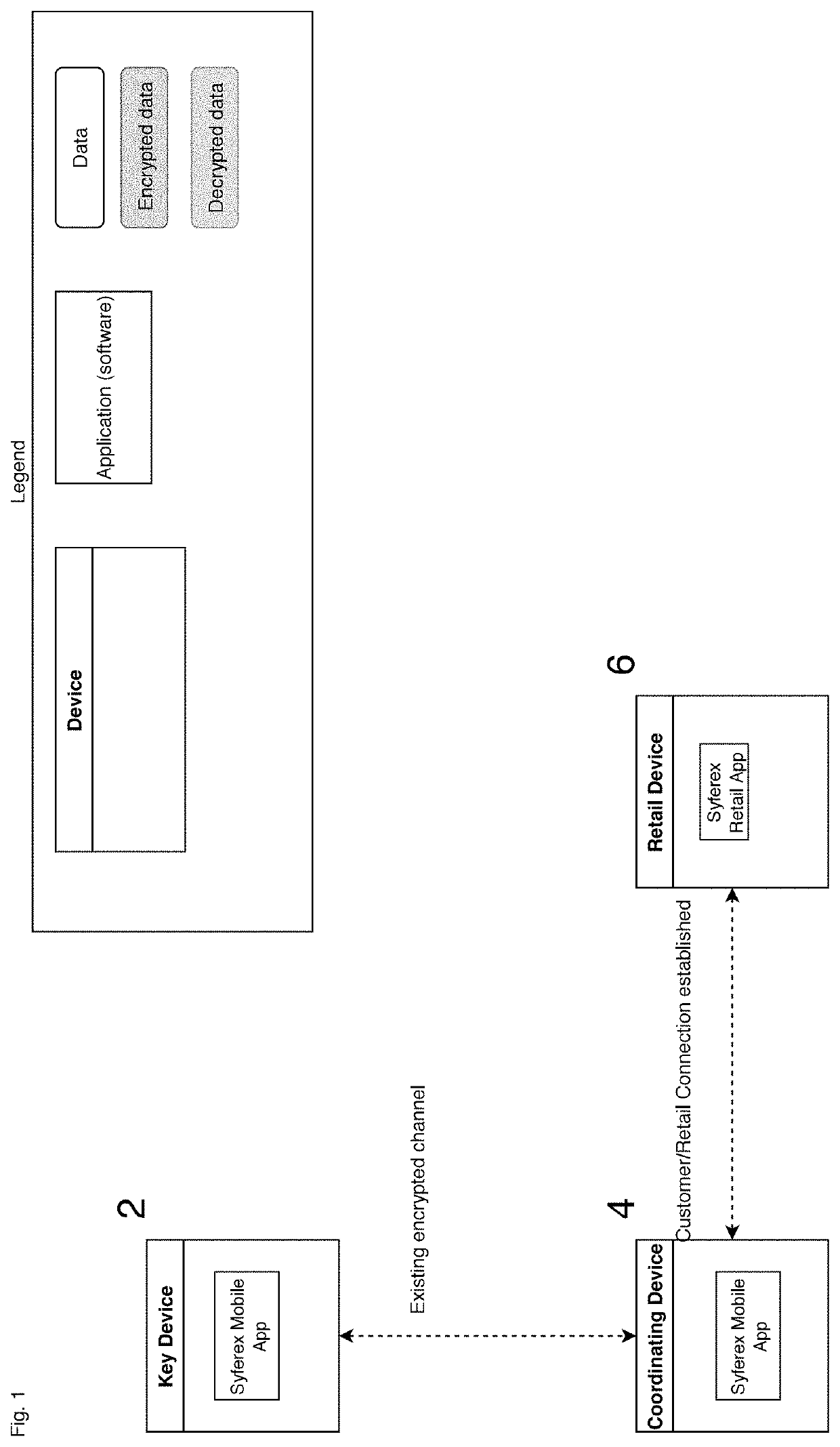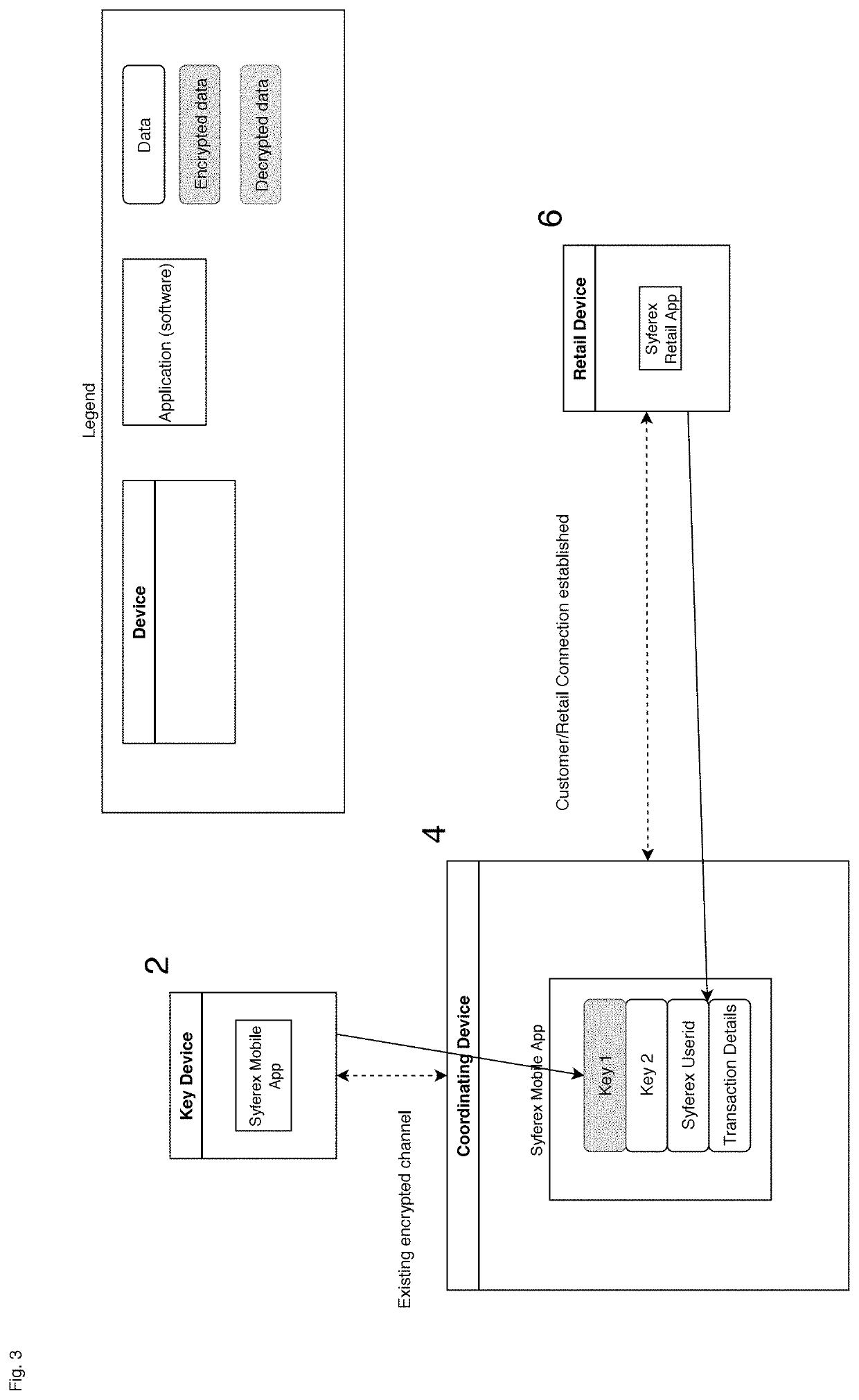Authentication system using paired, role reversing personal devices
a technology of authentication system and personal device, applied in the field of authentication of individuals, can solve the problems of fundamental and existential security risk of individuals and organizations, most are flawed, and the migration of data to digital, cloud based storage solutions, etc., and achieve the effect of enhancing security and simplicity, and high security and unobtrusiveness
- Summary
- Abstract
- Description
- Claims
- Application Information
AI Technical Summary
Benefits of technology
Problems solved by technology
Method used
Image
Examples
Embodiment Construction
[0045]With reference to FIG. 1, an embodiment of the subject invention is illustrated wherein a pair of user controlled computing devices, such as personal devices 2 and 4, designed in accordance with the subject invention, are illustrated. User controlled computing devices may take a variety of forms provided each such device is capable of (1) generating a time variable encryption key, and (2) communicating that time variable encryption key to a second user controlled computing device. Desirably, the user controlled computing devices should be under the exclusive control of the user, at least during the time that each device is used to implement the encrypted communication contemplated by this invention. At least one of the user controlled computing devices (and desirably both) includes (or communicates with) a user interface UI. Such UI may be incorporated into the user controlled computing device or may be separate therefrom. For example the user interface may take the form of a ...
PUM
 Login to View More
Login to View More Abstract
Description
Claims
Application Information
 Login to View More
Login to View More - R&D
- Intellectual Property
- Life Sciences
- Materials
- Tech Scout
- Unparalleled Data Quality
- Higher Quality Content
- 60% Fewer Hallucinations
Browse by: Latest US Patents, China's latest patents, Technical Efficacy Thesaurus, Application Domain, Technology Topic, Popular Technical Reports.
© 2025 PatSnap. All rights reserved.Legal|Privacy policy|Modern Slavery Act Transparency Statement|Sitemap|About US| Contact US: help@patsnap.com



